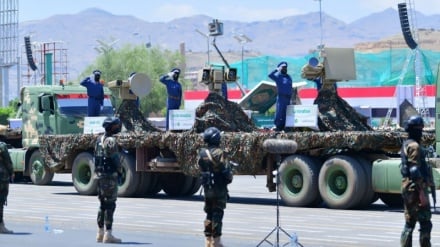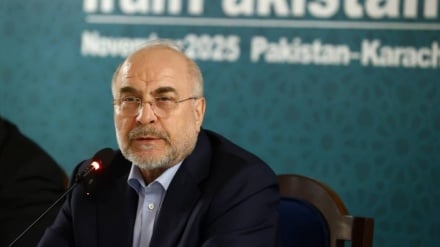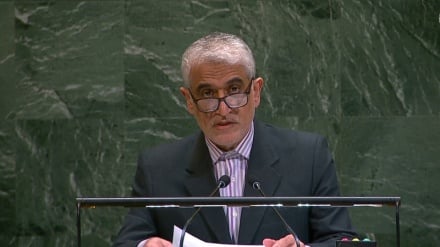Yemen’s descent into foreign-made hell
It’s the war from hell, the savage one that Saudi Arabia and the United Arab Emirates, along with seven other Middle Eastern and North African states, have been waging in Yemen since March 2015, with fulsome support from the Pentagon and American weapons galore.
It’s got everything. Dead children in the dozens, a never-ending air campaign that pays scant heed to civilians, famine, cholera, you name it. No wonder it’s facing mounting criticism from human rights groups and even in the US Congress. Still, ever since President Donald Trump (like Barack Obama before him) embraced the Saudi-led coalition as this country’s righteous knight errant in the Middle East, the fight against impoverished Yemenis. Meanwhile, the al-Qaeda affiliate there continues to expand.
For years now, a relentless Saudi air campaign (quite literally fueled by the U.S. military) has hit endless civilian targets, using American smart bombs and missiles, without a peep of protest or complaint from Washington. Only a highly publicized, completely over-the-top slaughter recently forced the Pentagon to finally do a little mild finger wagging. On August 7th, an airstrike hit a school bus — with a laser-guided bomb made by Lockheed Martin — in northern Yemen, killing 51 people, 40 of them schoolchildren. Seventy-nine others were wounded, including 56 children. Soon after, a U.N. Security Council-appointed group of experts issued a report detailing numerous other egregious attacks on Yemeni civilians, including people attending weddings and funerals. Perhaps the worst among them killed 137 people and wounded 695 others at a funeral in Sana’a, Yemen’s capital, this April. The attack on those schoolchildren and the U.N. report amplified a growing global outcry against the carnage in Yemen.
Some appalling numbers document the anguish Yemenis have endured. Saudi and Emirati warplanes officially have killed 6,475 civilians and wounded more than 10,000 others since 2015. Targets struck have included farms, homes, marketplaces, hospitals, schools, and mosques, as well as ancient historic sites in Sana’a. And such incidents haven’t been one-off attacks. They have happened repeatedly. By April 2018, the Saudi-led coalition had conducted 17,243 airstrikes across Yemen, hitting 386 farms, 212 schools, 183 markets, and 44 mosques. Such statistics make laughable the repeated claims of the Saudis and their allies that such “incidents” should be chalked up to understandable errors and that they take every reasonable precaution to protect innocents. Statistics compiled by the independent Yemen Data Project make it clear that the Persian Gulf monarchs don’t lie awake at night lamenting the deaths of Yemeni civilians.
And when it comes to the destruction of civilian lives and livelihoods, believe it or not, that may be the least of it. Take the naval blockade of the country by Saudi Arabia and the United Arab Emirates that cut the number of ships docking in the port of Hodeida from 129 between January and August 2014 to 21 in the same months of 2017. The result: far less food and medicine entered the country, creating a disaster for Yemenis.
That country, the Arab world’s poorest, has long relied on imports for a staggering 85% of its food, fuel, and medicine, so when prices soared, famine spread, while hunger and malnutrition skyrocketed. Nearly 18 million Yemenis now rely on emergency food aid to survive: that’s an unbelievable 80% of the population. According to the World Bank, “8.4 million more are on the brink of famine.” The blockade also contributed to a cholera epidemic, which the shortage of medicines only exacerbated.
According to a World Health Organization report, between April 2017 and July 2018, there were more than 1.1 million cholera cases there. At least 2,310 people died from the disease, most of them children. It is the worst cholera outbreak since statistics began to be compiled in 1949. The prime contributors to the epidemic is the drinking water contaminated by rotting garbage (uncollected because of the war), devastated sewage systems, and water filtration plants that stopped running due to lack of fuel — all the result of the horrendous bombing campaign.
Wartime economic blockades starve and sicken civilians and soldiers alike and so amount to a war crime. Those American-supplied weapons have included cluster munitions, which pose a particular hazard to civilians because, when dropped from a plane, their devastating bomblets often disperse over enormous areas. American arms have continued to flow to Saudi Arabia, while its warplanes rely on U.S. Air Force tankers for mid-air refueling, some 88 million pounds of fuel as of this January according to a Central Command spokeswoman. The Saudi military has received regular intelligence information and targeting advice from the Pentagon since the Saudi-led assault began. And with the advent of Donald Trump, such military involvement has only deepened: U.S. Special Operations forces are now on the Saudi-Yemen border, helping to attack the impoverished nation.
In June 2018, the Saudi coalition heightened the risk to Yemeni civilians yet more by launching an offensive (“Golden Victory”) to capture the port of Hodeida. Saudi and Emirati airpower and warships supported Emirati and Sudanese troops on the ground joined by the stooge militias. The advance, however, quickly stalled in the face of Yemenis’ resistance, though only after at least 50,000 families had fled Hodeida and basic services for the remaining 350,000 were disrupted, creating fears of a new outbreak of cholera.
In recent years, opposition to the war in Congress has been on the rise, with Senator Bernie Sanders and Representative Ro Khanna playing prominent roles in mobilizing it. But such congressional critics had no effect on Obama’s war policy and are unlikely to sway Trump’s. They face formidable barriers. The mainstream narrative on the war remains powerful, while the Persian Gulf monarchies continue to buy vast quantities of American weaponry; and don’t forget the impressive, money-is-no-object Saudi-Emirati lobbying operation in Washington.
In Yemen, the United States backs a grim military intervention for which — unless you are a weapons company — it is hard to find any justification, practical or moral. Unfortunately, it is even harder to imagine President Trump or the Pentagon reaching such a conclusion and changing course. In short, a war on terror has turned into a war of and for terror.
That was excerpts from an article by Rajan Menon, a TomDispatch regular commentator, who is Professor of International Relations at the Powell School, City College of New York, and Senior Research Fellow at Columbia University’s Saltzman Institute of War and Peace Studies.
EA/ME


